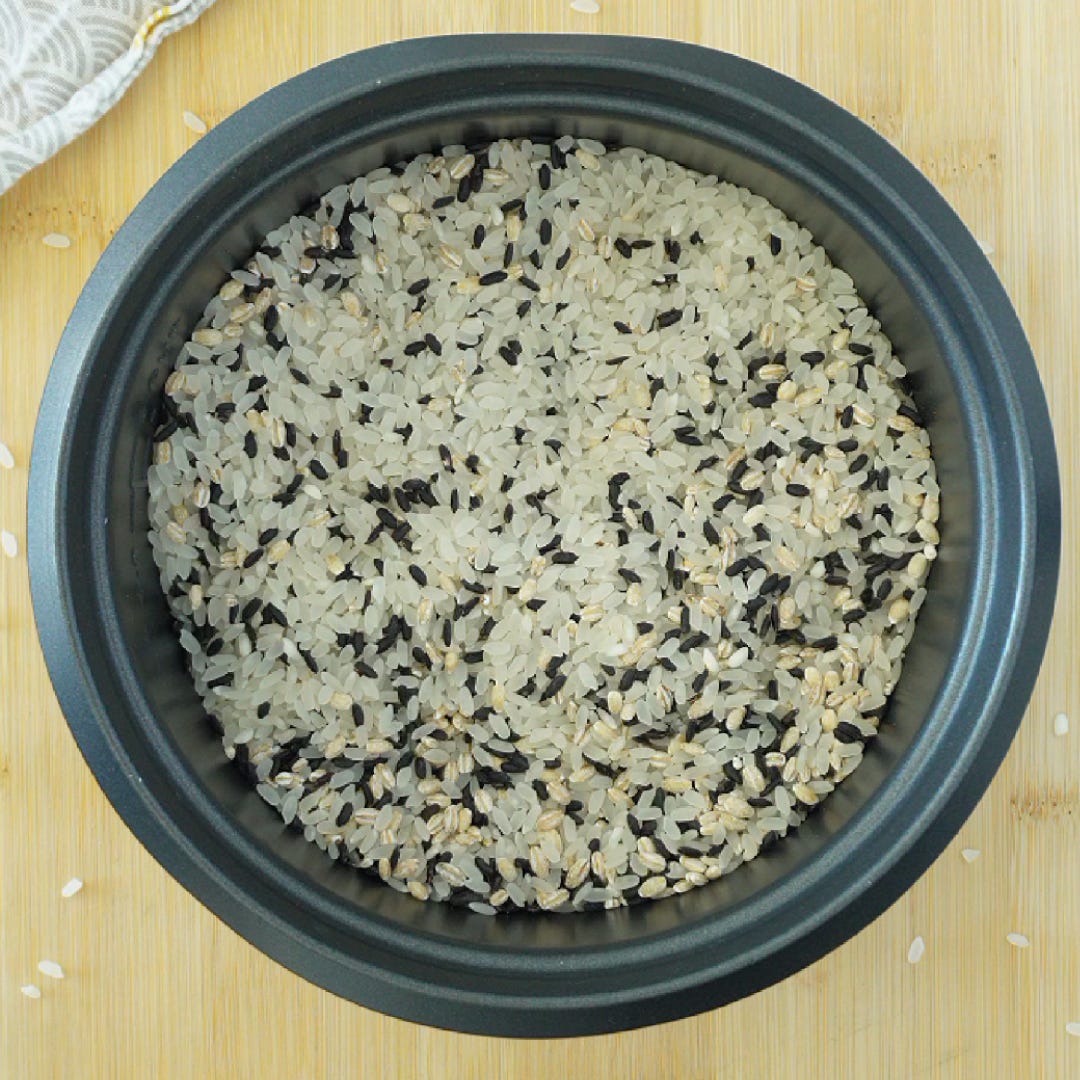how to enjoy your favorite rice with half the blood sugar spike
whoever said white rice was 'unhealthy', I'd like to prove you wrong
It’s not uncommon to hear someone say that you shouldn’t eat white rice because it’s ‘unhealthy’.
While it’s true that white rice alone isn’t ideal for some of us (such as those managing our blood sugar), that doesn’t mean you have to cut it out of your diet completely.
Instead, what we need to change is how we prepare it and the best way to do that is by making “purple rice”.
In today’s lesson, we’ll learn the science behind why all rice is not the same, what you can do to make your favorite kind better for you, and how you can make purple rice at home.
*if you’re looking for the recipe, scroll down until you hit “THE RECIPE” :)
INTRO TO THE GI
The glycemic index is a way to measure and score foods based on how quickly they raise your blood sugar levels.
For those of us with blood sugar conditions such as diabetes or insulin resistance, the glycemic index (GI) is a great way to manage food choices in order to prevent rapid blood sugar spikes.
The higher the food’s glycemic index number, the faster your blood sugar rises after eating it.
Different types of rice digest uh differently, meaning their effects on your blood sugar can vary based on factors such as processing, cooking method, fiber amounts, and starch characteristics1.
These differences are reflected by their difference in glycemic index values.
Let’s take short grain white rice compared to black rice, for example.
Short grain white rice has higher starch content which gives it its stickier texture and contributes to its higher GI value of ~682.
Black rice contains higher levels of fiber and has a GI value of ~35, which is classified as a low GI food.3
The starches in black rice are made up of a greater number of the glucose polymer known as amylose, which makes the rice harder to breakdown and digest, slowing down its blood sugar release4.
While short grain white rice is my favorite type, its effects on your blood sugar aren’t…great - however!!! - combining it with lower glycemic index rice varieties cough like wild black rice cough, results in an overall lower GI value and slower blood sugar rise. :)
The best part is, we are not reinventing the wheel here.
This method, known as preparing purple or multi-grain rice, has been used in Korean culture for generations. Not only is it delicious, it’s also significantly better for your blood sugar.
In my recipe, I use a mixture of short grain white rice, wild black rice, and pressed barley (the purple color comes from the black rice btw).
Bonus tip: if you’ve ever washed rice (which you absolutely should), the water starts off cloudy and gets clearer as you continue washing it. The cloudiness is actually excess starch you’re rinsing out of the rice, so wash until the water is mostly clear!
THE RECIPE
INGREDIENT DEEP DIVE
wild black rice - where the rice gets its purple color from
barley - this grain is a little bigger than the white or black rice grains and has a slightly nuttier texture and taste to it
TECHNIQUE DEEP DIVE
Using your hand to measure the water:
There are two methods to measuring how much water you should use to cook Asian style rice. I grew up using the finger method but I personally prefer the flat hand method
With the finger method, you’ll place your middle finger directly on top of the rice and add water until it reaches the first crease on the inside of your finger.
With the flat hand method you’ll place your entire hand on top of the rice, ensuring each finger lays flat, and add rice until it reaches your first knuckle.
INGREDIENTS
1 cup short grain white rice
2/3 cup wild black rice
1/3 cup barley
water
INSTRUCTIONS
Combine the white rice, black rice, and barley into your rice cooker bowl. Mix to distribute.
Add water, wash, and rinse the rice until the water runs clear (mine typically takes 4-6 rinses)
Add water using the finger or flat hand method (as noted above). Set rice cooker to cook mode or mixed rice mode (if available)







